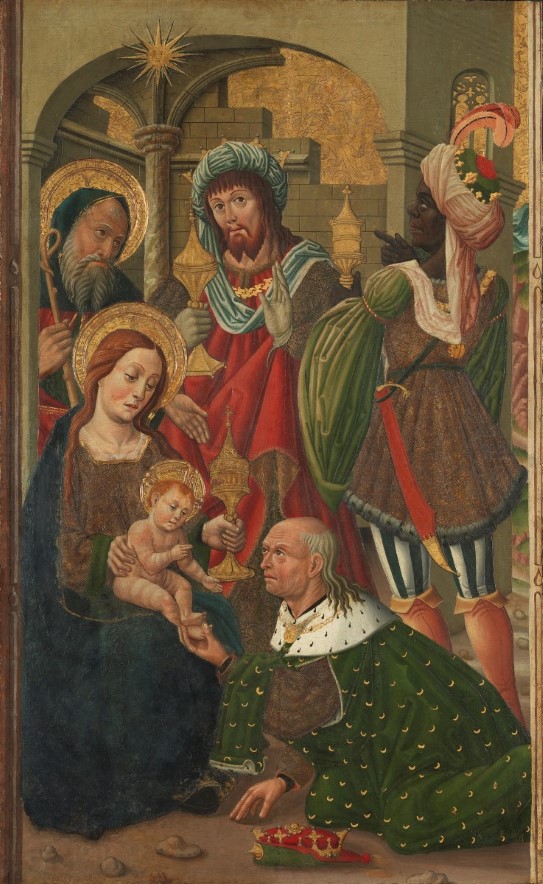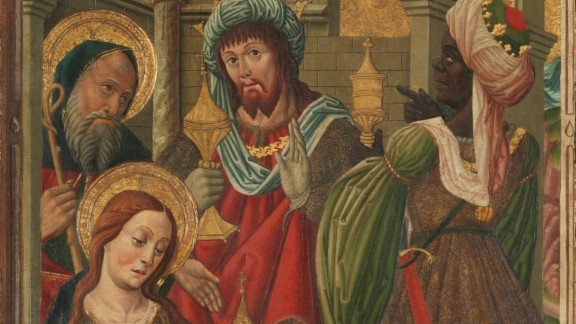Text by Senior Curator Learning Ellen Lerberg
The very first paintings on the Christmas story theme date back to around 200 AD.
The National Museum’s collection contains many depictions of the young mother Mary and her baby son Jesus, by different artists from different periods. Traditionally, Mary is dressed in blue and red. The colours symbolise love and Mary’s status as the eternal Queen of Heaven. The baby Jesus is generally naked apart from a loincloth or a white smock. His attire can be seen as a portent of his coming death.
The Holy Family
Sometimes, the group is extended to include Joseph. He is often placed in the background. In The Holy Family by Quentin Matsys, Joseph, Mary and the child form a unified whole. Even so, Joseph is marked out by his darker complexion. The mother and child have the same pale skin and are in close physical contact. Lying in the foreground are a bunch of grapes and two apples, symbols of life, but also of death.
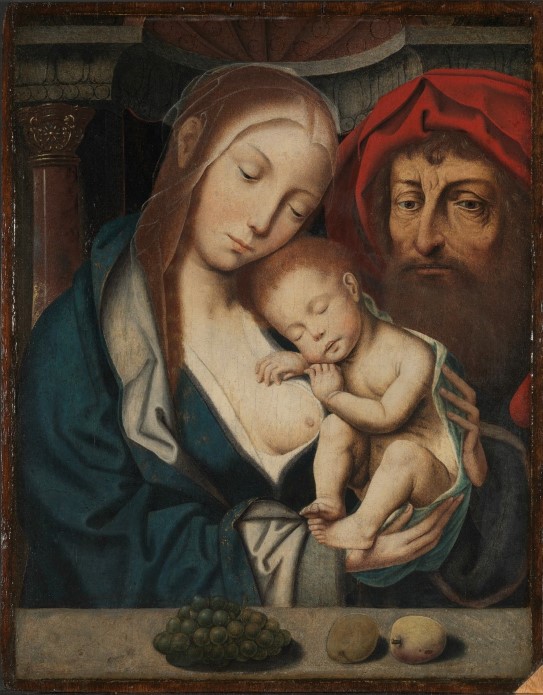
The symbolism of the apple
In the painting attributed to Lucas Cranach the Elder, Joseph is absent. Maria’s blue robe has a sumptuous lining that shimmers gold. The infant Jesus is awake and holding an apple up towards his mother. This is meant to remind us – and her – of Jesus’ fate. In the background is an imagined landscape with a castle perched on a steep hilltop.
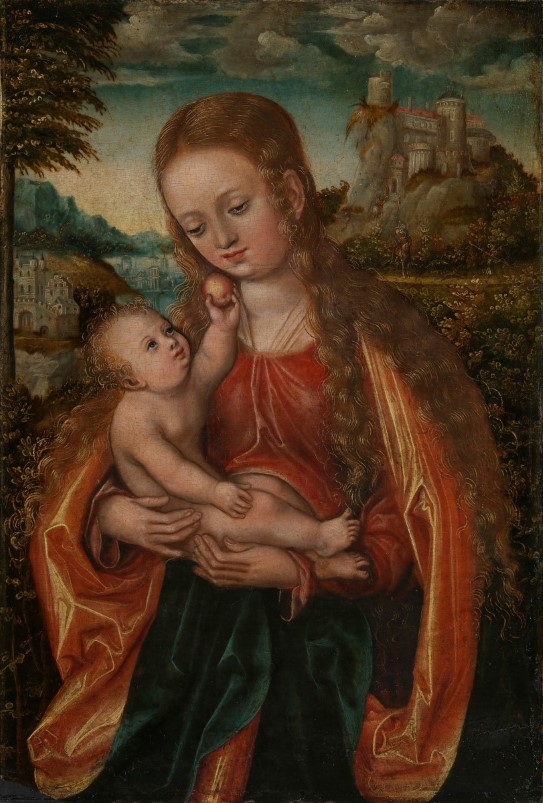
Maria Lactans
In many depictions of the birth of Jesus, Joseph is omitted and the only figures we see are Mary and baby Jesus. In Dürer’s etching, Jesus is swaddled. This was a traditional way of dressing infants up until the 1930s. Jesus is sitting with his face towards his mother, who is breastfeeding him. Known as Maria Lactans or Virgo Lactans, this situation begins to be depicted around the turn of the 12th century. Although there are few people in Dürer’s picture, it is rich in detail – the fascinating drapes of Mary’s dress, the beautiful curls of the infant’s hair, or the exquisite vegetation that we see behind them.
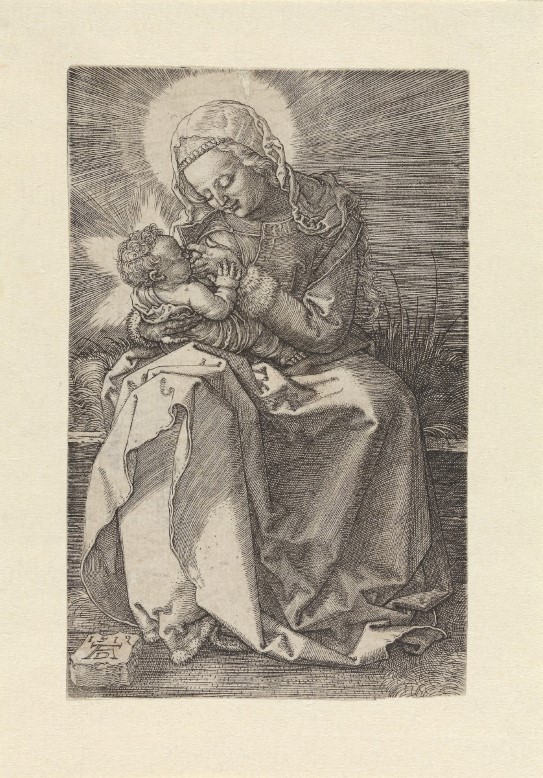
The Flight to Egypt
In many pictures of Mary and Jesus, events that shaped their lives are sometimes included in the background. In the painting attributed to Gerard David, the central characters are obvious. But in the background on the right we are given a glimpse of the little family in flight. Joseph had been warned in a dream that his son was in danger and that they should flee to Egypt (Matthew 2:13–23). King Herod wanted to kill the baby boy, whom he regarded as a threat to his power. In Gerard’s painting, Mary and the baby Jesus are riding on a donkey led by Joseph.
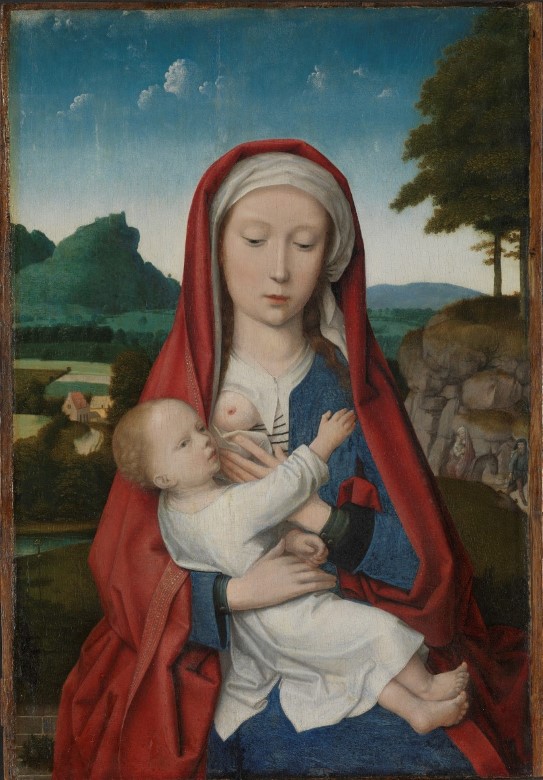
The Three Wise Men
January 6th (Epiphany) is traditionally taken as the date on which the Three Wise Men reached the stable where Jesus was born. Balthazar, Melchior and Caspar are described by the evangelist Matthew (2:1–12) as astrologers who were guided to the place where Jesus lay by the star of Bethlehem. In the painting we see the holy family and the three kings arriving with their gifts of gold, frankincense and myrrh. Most people today know what gold and incense are, but what is myrrh? In the Middle East and ancient Greece and Rome, myrrh was produced from the myrrh tree and used both in medicine and to flavour food. It was valuable commodity.
One of the kings, kneeling before the baby Jesus, has taken off his crown in a gesture of reverence. The other two kings frame the family group, while high above them hangs the star of Bethlehem. To the left stands Joseph, identified by his beard and staff. With his hand he leads the visitors’ attention to the mother and child.
